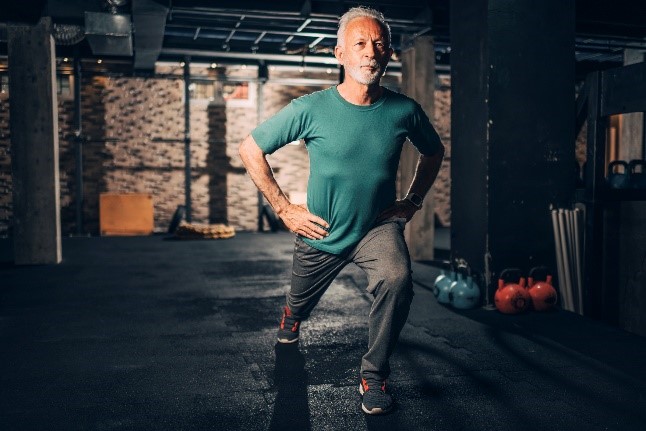| Reader, Parkinson's is one of the cruelest conditions I know. It kills off neurons in the part of your brain that controls the movement of your body.
That's why patients find walking and even getting out of a chair increasingly difficult. They suffer tremors, muscular weakness, and stiffness. And these symptoms grow progressively worse over time.
Mainstream medicine offers no hope to the victims of this dreadful condition.
Big Pharma's prescription meds treat only the symptoms. They don't change the course of the disease.
And the side effects of these drugs are awful.
They can cause hallucinations, dizziness, confusion, nausea, insomnia, and a condition called dyskinesia, which is characterized by involuntary, erratic, jerking movements of the face, arms, legs, and body.
I never prescribe these drugs. Their side effects can be crueler than the disease itself.
Here at the Sears Institute for Anti-Aging Medicine, I recommend a specific kind of high-intensity exercise.
And new research backs me up.
For the first time, researchers at Yale have provided scientific evidence that the neurodegeneration caused by Parkinson's can be reversed with exercise.
The Yale researchers, publishing in the journal NPJ Parkinson's Disease, revealed that vigorous, high-intensity exercise induces brain-protective effects that don't just slow down the neurodegenerative effects of Parkinson's…
But reverses them.1
Previous research has shown that many forms of exercise are linked to improved symptoms of Parkinson's disease.
But now, this proof-of-concept study shows that vigorous exercise preserves the dopamine-producing neurons in the brain that are most vulnerable to destruction in patients with Parkinson's.
You may already know that dopamine is a chemical neurotransmitter that helps brain cells communicate with each other. The Yale research also revealed that after six months of high-intensity exercise, the study participants' neurons grew healthier and produced even stronger dopamine signals.
This is important news. It's estimated that by 2040, more than 12 million people worldwide will be living with Parkinson's.2
There's another reason why vigorous exercise works against Parkinson's.
It produces a powerful little protein called AMPK. This enzyme acts like a kind of "master regulating switch."
The problem is that AMPK levels decline as you age.3
Old cells with low AMPK often become clogged with debris. They operate at lower efficiency. These junk-filled cells speed up the aging process. And studies show they are a key contributor to neurodegenerative diseases like Parkinson's.4
I recommend my high-intensity PACE program to boost AMPK and the dopamine neurons in the brains of my Parkinson's patients.
PACE stands for Progressively Accelerating Cardiopulmonary Exertion. It shifts the focus of a workout from "how long" you work, to "how intensely" you exert yourself.
I originally designed the program to strengthen the heart and lungs and increase the body's oxygen levels – but it does so much more.
And the really great thing about PACE is that you only need 12 minutes a day. You don't need expensive equipment or a gym membership to do it.
You can choose any exercise that will make you stop and pant for breath.
All you have to do is increase the challenge to your lungs and heart little by little, and then accelerate it. As well as protecting you from Parkinson's, it gives you the extra capacity your lungs need to do the things you want to in your everyday life.
The secret is pushing yourself in your workouts so you have to catch your breath. Boost AMPK In Less Than 12 Minutes A Day If you're just beginning PACE, I recommend a simple starting exercise known as alternating lunges.
And like all PACE exercises, this is safe at every age…  You can do PACE no matter what shape you're in. | - With your hands on your hips, take a step forward with your right leg until your front knee is bent and your back knee almost touches the ground.
- Push off from your leading foot and return to starting position.
- Repeat with your left leg. Continue until you feel winded.
- Rest, recover, and do two more sets.
NOTE: Start at a speed and level of intensity you're comfortable with. From there, be sure to progressively increase the intensity over time.
The key is to listen to your body. You should be panting at the end of each exertion period. You should not be taxed and exhausted throughout the whole workout.
I've heard from both patients and readers that they believe you need to be in good shape before you can do PACE.
But in fact, you can do it no matter what shape you're in. I like to say if you can move, you can do PACE.
If you want to learn some other good PACE exercises, go to my YouTube channel: https://www.youtube.com/user/AlSearsMD/videos. I have more than 30 different exercises and a complete workout to help you get started. To Your Good Health, 
Al Sears, MD, CNS
References: - de Laat B, et al. "Intense exercise increases dopamine transporter and neuromelanin concentrations in the substantia nigra in Parkinson's disease." NPJ Parkinsons Dis. 2024 Feb 9;10(1):34.
- Backman I. "High-intensity exercise can reverse neurodegeneration in Parkinson's." Yale School of Medicine Press Release. February 23, 2024
- Salminen A, Kaarniranta K. "AMP-activated protein kinase (AMPK) controls the aging process via an integrated signaling network." Ageing Res Rev. 2012;11(2):230-41.
- Hindle JV. "Aging, neurodegeneration and Parkinson's disease." Age Aging. 2010;39(2):156-61.
|
No comments:
Post a Comment